Let's first start with a simple measurement (using pink noise) right into the axis of the speaker :
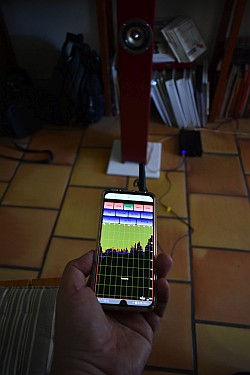
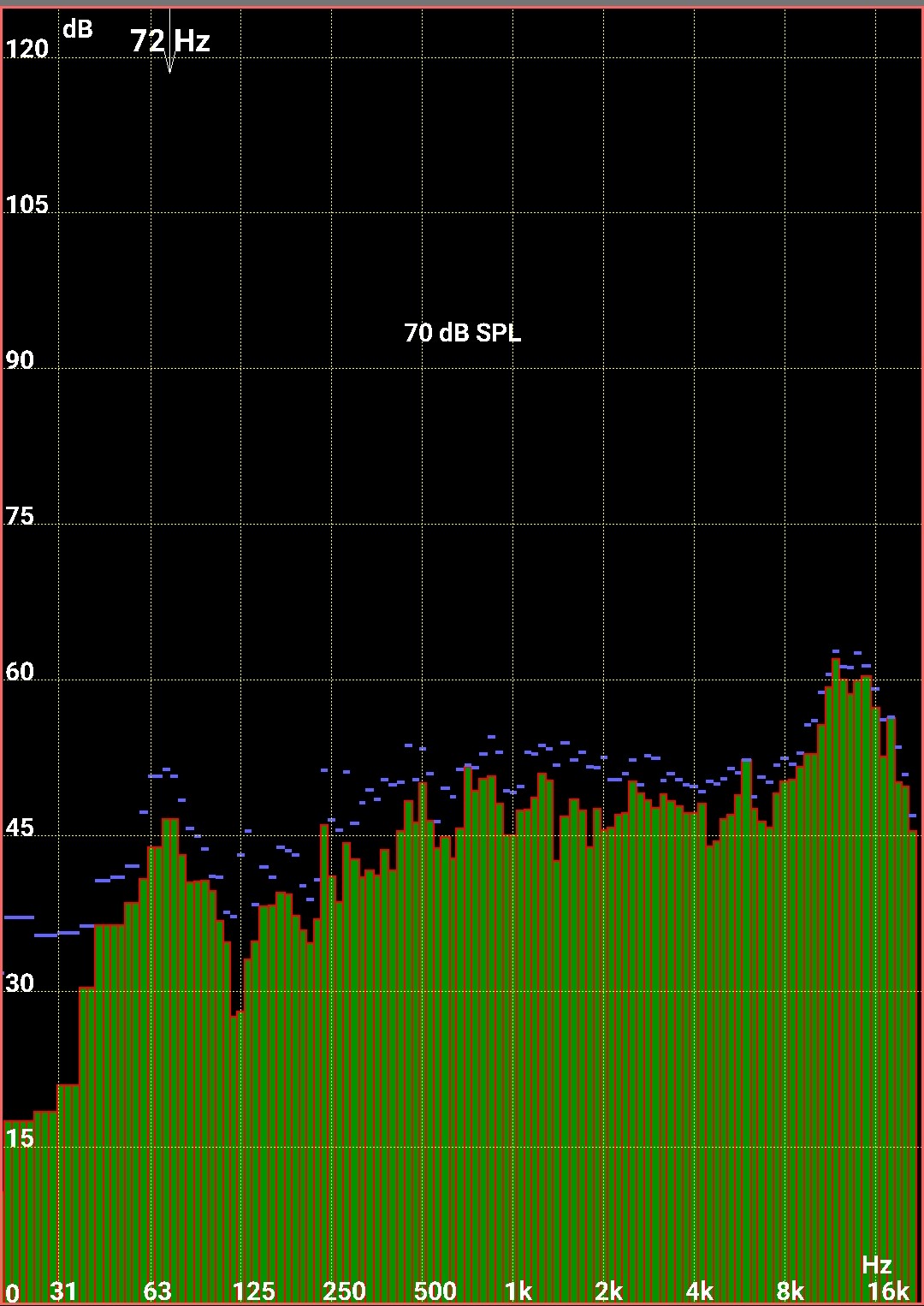
You will notice that there is a peak around 10 000 Hz. This is a known fact of the Tang-Band W4 1337 speaker.
If we go a little off axis (about 15°), you can notice that the peak disappears (in light blue the previous peaks are displayed) :

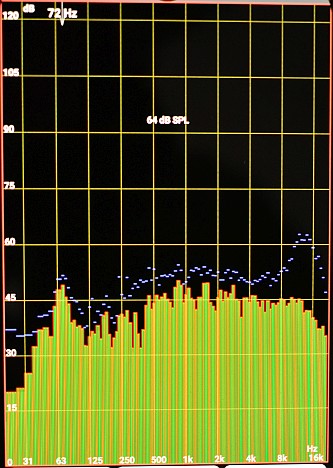
This means that you should leave the boxes perpendicular to the wall, and not turn them towards you, in this way you will get the best frequency response.
Note that even when I tried with both speakers in axis with my ears, I didn't notice much of a difference. I gess it depends of what music you listen to, and I think I am not that much of an audiophile to my disappointment ... 😬
The bass is where the loaded transmission line should make all the difference. And indeed, the bass is there !
Measurement of the speaker (5 cm distance) with pink noise :

We can see that the bass falls off gently (about 12 dB/Oct), starting around 70 Hz. Not too bad !
Now if we measure what is going out of the port :
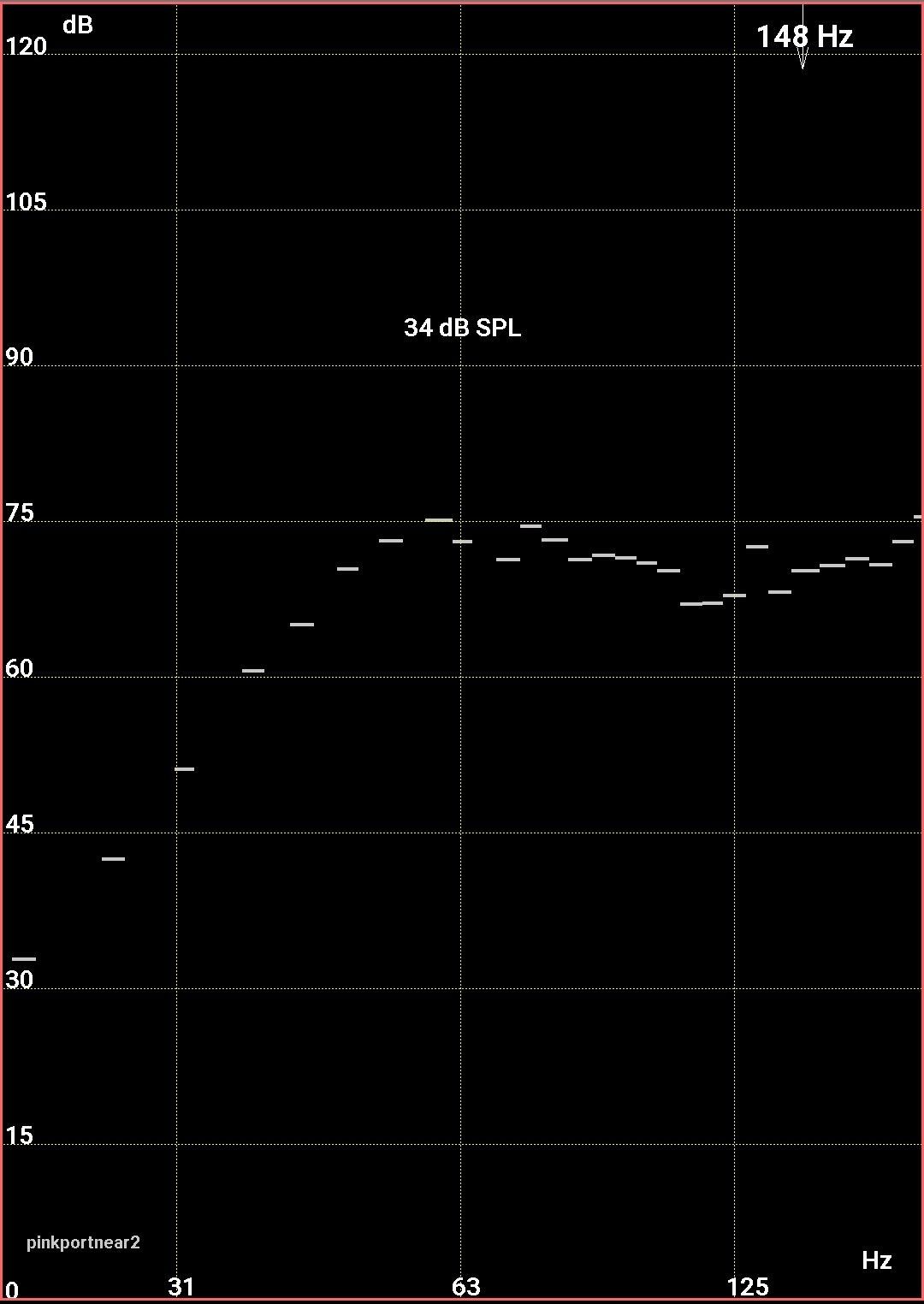
WOW ! Here is some bass coming out ! At 50 Hz everything is still there ! And even at 40 Hz, there is significant output. This is where all really happens.
This is something very audible, this time I hear it quite well ...
Now when sweep mode is used by injecting a regular sine wave, we have interesting results.
At first I have measured the speaker on axis at a distance of 1m
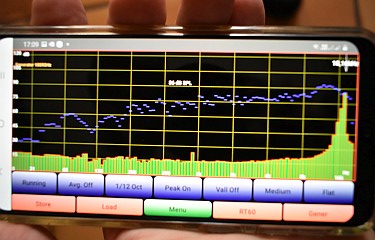
We find again our peak at 10 KHz, and the bass decreases as early as 250 Hz. This is clearly due to the measurement conditions, as at this distance we are in the middle of the room.
I tried to be more in the listening conditions. this time I put the microphone 2 m away from the box, at 50 cm from the ground, so that it is positioned halfway between the speaker and the port opening. In this manner I hoped to cancel some room modes (although they can never be cancelled, really).
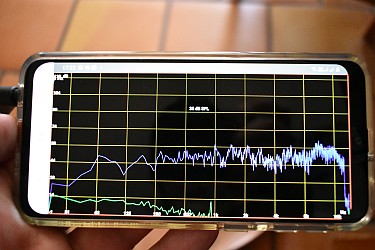
This looks much more balanced ! We still have 2 room modes at 125 and 250 Hz, but otherwise this is rather satisfying. Notice how the mids have a very flat curve.